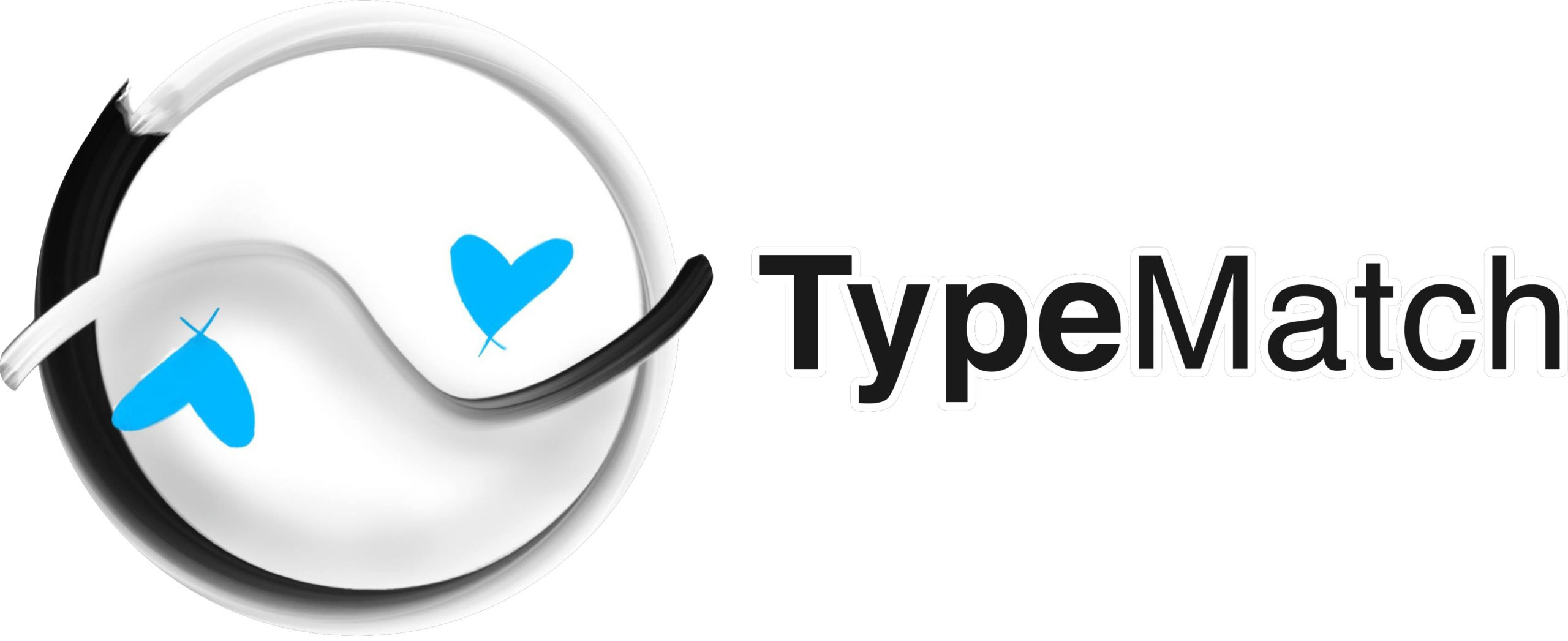What Personality Types Clash Most
Wonder why certain personality types seem to clash? It’s likely due to the types having different and conflicting cognitive functions. We are not our personality types, but we can use type as a system of understanding how our minds primarily perceive and process information. What this means is that people with different cognitive functions look through a different lens and prioritize information differently than we do. Obviously, diversity of cognition is extremely beneficial in larger society as people together are able to see and process the complete picture. However, within the context of individual relationships, these different perspectives can and often do cause a clash. When two people with different cognitive functions clash, it can feel like the other person is living in a completely different reality or focusing on all the wrong things. Truly, we speak through our functions (our perception lenses) and so it is like speaking a language the other doesn’t understand. As a result, communication can break down if you’re not able to come to a common point of view. Below is a list of what personality types clash most and why.
Most clashing pairs
The pairs that class the most have very little understanding of each other’s cognitive functions. They have as different a view of the world as possible.
- ESTP & INFP
- ESTP- Se Ti Fe Ni
- INFP- Fi Ne Si Te
- ISTP & ENFP
- ISTP- Ti Se Ni Fe
- ENFP- Ne Fi Te Si
- ESTJ & INFJ
- ESTJ- Te Si Ne Fi
- INFJ- Ni Fe Ti Se
- ISTJ & ENFJ
- ISTJ- Si Te Fi Ne
- ENFJ- Fe Ni Se Ti
- ESFP & INTP
- ESFP- Se Fi Te Ni
- INTP- Ti Ne Si Fe
- ISFP & ENTP
- ISFP- Fi Se Ni Te
- ENTP- Ne Ti Fe Si
- ESFJ & INTJ
- ESFJ- Fe Si Ne Ti
- INTJ- Ni Te Fi Se
- ISFJ & ENTJ
- ISFJ- Si Fe Ti Ne
- ENTJ- Te Ni Se Fi
The TJ and TP Clash (Te vs Ti)
- Te- extraverted thinking
- Definition: External facts and data. Understanding of systems of efficiency and effectiveness. Asking “how?” behind the end result.
- High Te users- ENTJ, ESTJ, INTJ, ISTJ (AKA the “TJ” types)
- Ti- introverted thinking
- Definition: Internal logical framework of understanding. What “makes sense” based on logical formulas and first principles. If/then statements of truth. Asking “why?” behind the action.
- High Ti users- ESTP, ENTP, ISTP, INTP (AKA the “TP” types)
How they clash
- Te user is focused on efficiency and gets frustrated with Ti user’s need for understanding which can slow things down.
- Ti user can lack respect for Te user’s lack of depth of understanding a subject. The Ti user sees that the Te user can say a bunch of facts but does not have a true understanding of the subject at its core.
- When a Te user teaches or tries to explain a concept to a Ti user, the Ti user is prone to ask many questions to develop their own internal framework of the subject. The Te users sometimes interpret these questions as being dumb or lacking research.

The TP and FP Clash (Ti vs Fi)
- Ti- introverted thinking
- Definition: Internal logical framework of understanding. What “makes sense” based on logical formulas and first principles. If/then statements of truth. Asking “why?” behind the action.
- High Ti users- ESTP, ENTP, ISTP, INTP (AKA the “TP” types)
- Fi- introverted feeling
- Definition: Internal value system that judges what is good/bad and what is valuable to the individual. Sense of identity as tied to personal values.
- High Fi users- ESFP, ENFP, ISFP, INFP (AKA the “FP” types)
How they clash
- Fi user’s values do not make sense to the Ti user becaused they are based in an intuitive feeling and liking of a thing rather than underlying reasons.
- The Ti user’s logic is not valuable to the Fi user. They don’t care about the Ti user’s reasons behind an action, just that they did it.
- Fi user only values Ti user’s reasons when they are used in favor of something the Fi user already values.
- Fi user makes Ti user feel like they’re a bad or cold person for putting logic above feeling.
- Ti user makes the Fi user feel like their feelings are invalid in the face of logic.
- They end up in a spiral of the Fi user guilting the Ti user and the Ti user shaming the Fi user.

The FJ and FP Clash (Fe vs Fi)
- Fe- extraverted feeling
- Definition: Observance of social norms and shared values. Creation and maintenance of group harmony. Identification with group identity.
- High Fe users- ESFJ, ENFJ, ISFJ, INFJ (AKA the “FJ” types)
- Fi- introverted feeling
- Definition: Internal value system that judges what is good/bad and what is valuable to the individual. Sense of identity as tied to personal values.
- High Fi users- ESFP, ENFP, ISFP, INFP (AKA the “FP” types)
How they clash
- Fe user can appear “shallow” or “fake” to Fi user and seem too concerned with fitting in instead of being themselves.
- Fi user can appear “selfish” to Fe user and seem too wrapped up in themselves rather than getting along with others.
- Fe user focuses on the group rather than the individual. Fi user interprets this as not valuing them enough and feels hurt.
- Fi user focuses on their own likes and identity over the group harmony. Fe user interprets this as disrupting the peace and being stubborn.

The TJ and FJ Clash (Te vs Fe)
- Te- extraverted thinking
- Definition: External facts and data. Understanding of systems of efficiency and effectiveness. Asking “how?” behind the end result.
- High Te users- ENTJ, ESTJ, INTJ, ISTJ (AKA the “TJ” types)
- Fe- extraverted feeling
- Definition: Observance of social norms and shared values. Creation and maintenance of group harmony. Identification with group identity.
- High Fe users- ESFJ, ENFJ, ISFJ, INFJ (AKA the “FJ” types)
How they clash
- Te user’s focus on efficiency can bulldoze over the harmony of the group and other people’s feelings which distresses the Fe user. The Fe user interprets this behavior as being an “a*-hole”.
- Fe user’s focus on group harmony can forsake efficiency. The Te user interprets this behavior as being too soft and unreliable in getting the job done.
- Te user’s directness can hurt the feelings of others. Fe user feels responsible to clean up the Te user’s “mess”.
- Fe user taking care of others’ feelings can put their own interests at jeopardy. Te user feels responsible to clean up the Fe user’s “mess”.

The SP and NP Clash (Se vs Ne)
- Se- extraverted sensing
- Definition: Engaging with the physical world. Referencing what is observable, real, and present.
- High Se users- ESTP, ESFP, ISTP, ISFP (AKA the “SP” types)
- Ne- extraverted intuition
- Definition: Exploring many possibilities and options for what could be. Exploring potential meanings through brainstorming.
- High Ne users- ENTP, ENFP, INTP, INFP (AKA the “NP” types)
How they clash
- Ne user prefers to focus on many possibilities that the Se user views as not practically actionable in the present.
- The Se user shoots down the Ne user’s ideas as they are not able to be done right now. This makes the Ne user feel devalued.
- To the Se user, the Ne user seems to not know how to do what needs to be done. They view them as lacking follow through.
- To the Ne user, the Se user seems narrow minded and unimaginative.

The SJ and NJ Clash (Si vs Ni)
- Si- introverted sensing
- Definition: Maintaining a system based on what has been true in the past. Referencing the past to make comparisons.
- High Si users- ISTJ, ISFJ, ESTJ, ESFJ (AKA the “SJ” types)
- Ni- introverted intuition
- Definition: Narrowing down possibilities to a singular path and vision to move towards. A feeling of where things are going.
- High Ni users- INTJ, INFJ, ENTJ, ENFJ (AKA the “NJ” types)
How they clash
- Ni user desires to move towards a singular vision for the future.
- Si user prefers to maintain their system for what has worked for them.
- Ni user sees Si user as stuck in their ways.
- Si user sees Ni as user moving too quickly into the unknown.
- Both appear immovable to the other.

The SP vs SJ Clash (Se vs Si)
- Se- extraverted sensing
- Definition: Engaging with the physical world. Referencing what is observable, real, and present.
- High Se users- ESTP, ESFP, ISTP, ISFP (AKA the “SP” types)
- Si- introverted sensing
- Definition: Maintaining a system based on what has been true in the past. Referencing the past to make comparisons.
- High Si users- ISTJ, ISFJ, ESTJ, ESFJ (AKA the “SJ” types)
How they clash
- Se user seeks to engage with what is actionable in the present in order to move towards singular Ni vision. Thus, they disrupt the status quo, distressing the Si user and making them feel like things are in chaos.
- Si user maintains the status quo in order to align themselves with whatever future may come their way (Ne)- making the Se user feel stifled and trapped.
- Se user doesn’t understand why Si user doesn’t want to move forward or “go for it”.
- Si user views Se user’s approach to the world as haphazard and dangerous.

The NP and NJ Clash (Ne vs Ni)
- Ne- extraverted intuition
- Definition: Exploring many possibilities and options for what could be. Exploring potential meanings through brainstorming.
- High Ne users- ENTP, ENFP, INTP, INFP (AKA the “NP” types)
- Ni- introverted intuition
- Definition: Narrowing down possibilities to a singular path and vision to move towards. A feeling of where things are going.
- High Ni users- INTJ, INFJ, ENTJ, ENFJ (AKA the “NJ” types)
How they clash
- Ni user seeks to narrow down to 1 meaning/path while Ne user seeks to expand to many meanings/paths.
- Ni user seeks to “know” while Ne user seeks to never truly “know”- closing vs. opening possibilities.
- Conflict arises over time wasted brainstorming by the Ne user but not deciding as the Ni user wishes to do.



